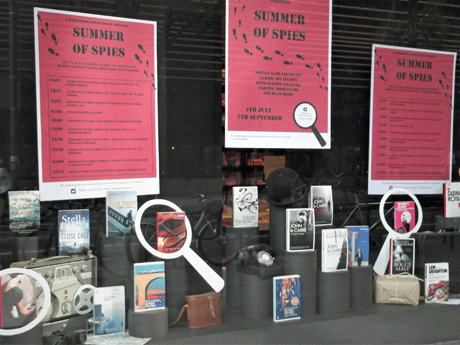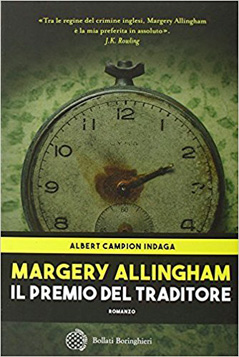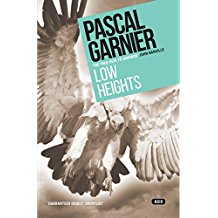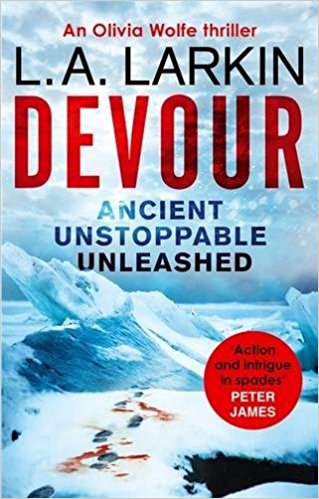|
Ambling
Along

The Summer of Spies promotion at Waterstones on London’s
Gower Street is now well under way and full details can be found here.
Apart from ‘book club’
sessions hosted by the eloquent Jake Kerridge, a quiz and special events
featuring Mick Herron and Charles Cumming, there will be an evening (22nd
August) when I will be grilled (I hope lightly) by Jake Kerridge on my ‘reader’s
history’ of British thrillers, Kiss Kiss Bang Bang.

For one of the earlier book
club meetings, dedicated to Eric Ambler’s Epitaph for a Spy, I was determined
to be well-prepared and so made a point of re-reading Ambler’s famous 1938
thriller. I have to say I enjoyed it so much (though it is not my favourite
Ambler) that I immediately abandoned my groaning To-Be-Read pile of new books
and re-read other Amblers from the same period, Cause for Alarm, Uncommon Danger and
The
Mask of Dimitrios (which probably is my favourite), in rapid
succession.

I do not regret the time spent
on revision, for the intellectual level of the discussion at the Ambler seminar
was high and it also gave me an excuse to rediscover – not that I had ever
really forgotten – what a great writer Ambler was, and what the following
generation of spy writers owed to him.
High
Adventure (Reprise)
Desmond Bagley was one of the best-selling
writers of adventure thrillers in the 1960s and 70s and he also showed on
occasion he could produce jolly good spy stories. He is fondly remembered by
loyal readers and writers who knew him and, unusually, by publishers. Now the fans who have kept the Bagley
flame burning since his death in 1983, as well as new readers, should rejoice
at the reissue of another four of his famous thrillers by HarperCollins.
   
Dissing
the Nay-Sayers
Several correspondents (and we
know where you live) have expressed a somewhat cynical view over a photograph
which appeared in last month’s column, claiming that a picture of your humble
correspondent reading an Italian edition of Margery Allingham’s Traitor’s
Purse was a product of something called ‘photo-shop’ – as if I would
know what that was.

I can assure the nay-sayers
that the book does exist in a new Italian translation, the title Il Premio del Traditore being literally
translated as ‘The Traitor’s Award’ (or ‘Prize’) and the book comes with a
cover blurb from no less than J.K. Rowling, in Italian of course, so I will
translate: ‘Among the queens of English
crime, Margery Allingham is my absolute favourite.’
And whilst on the subject of
the ‘queens of crime’ from the ‘Golden Age’ of the detective story, I have
learned much about New Zealand’s famous daughter Ngaio Marsh from the splendid
reissue of her 1935 novel The Nursing Home Murder in the
Collins Crime Club’s Detective Club imprint which comes with a fair and
intelligent Introduction from Stella Duffy.

Dame Ngaio’s third novel, The
Nursing Home Murder was written after she herself had been in hospital
for surgery (presumably minor). One of her doctors, the Irish surgeon Dr Henry
Jellett, helped her on technical details of the plot and indeed is credited as
a collaborator on the novel. Dr Jellett also helped with Marsh’s adaptation of
the book as the three-act play called Exit,
Sir Derek, which had quite an eventful opening run, with an audience member
fainting at the realistic surgery scenes on stage and the fact that the actors
managed to release real ether into the auditorium!
This new ‘mini’ hardback
edition also contains the first three, previously unseen, chapters of Ngaio
Marsh’s unfinished novel Money in the Morgue, which she began
in New Zealand at the end of World War II. Stella Duffy has taken up the
challenge of finishing the novel, which will be published in 2018.
Scandi-Sherlock
 It is well known that I am a
fan of all things ‘Scandi’ (as we say over the meatballs at Ikea) and have long-championed
the posthumous Fruits of the Loom trilogy
by Swedish crime writer and lingerie model Nisse Ektorp (see April 1st
columns from bygone years) and I thought I could not possibly learn any more
from our friends in the north. I was wrong, for it has taken a Swede to tell me
much about Sherlock Holmes that I did not know – and was probably afraid to
ask. It is well known that I am a
fan of all things ‘Scandi’ (as we say over the meatballs at Ikea) and have long-championed
the posthumous Fruits of the Loom trilogy
by Swedish crime writer and lingerie model Nisse Ektorp (see April 1st
columns from bygone years) and I thought I could not possibly learn any more
from our friends in the north. I was wrong, for it has taken a Swede to tell me
much about Sherlock Holmes that I did not know – and was probably afraid to
ask.
The Life and Death of Sherlock
Holmes by
Mattias Boström (Head of Zeus) is all you ever wanted to know about Sherlock
Holmes Ab ovo usque ad male as Horace
would have said, or at least from fictional creation to media megastar and into
popular myth. This is a superb piece of detailed scholarship, clearly a labour
of love for the author and, most importantly of all, is as readable as a good
thriller as it charts Holmes and his father/creator Arthur Conan Doyle from
Edinburgh’s Royal Infirmary in 1878 to his contemporary godfathers Steven Moffat
and Mark Gatiss and his reincarnation (Spoiler Alert: he’s not really dead) as
Benedict Cumberbatch.
Now I’m no Sherlockian, but it
seems a fairly comprehensive study to me, although I could not find, as I expected
to, any reference to Harry Keating’s famous 1979 work Sherlock Holmes, The Man and His World. Nonetheless this is a jolly entertaining book and will remain
a basic grounder in what can only be described as a literary and cultural
phenomenon for many years to come. The fact that it was written by a Swede is
proof of the global appeal of dear old Holmes and the author is a dedicated
fan.
I can say this with some
certainty as I am pretty sure I met a young and fresh-faced Matthias at the
1995 Bouchercon held in Nottingham.

One evening after a heavy
schedule of panels, seminars and presentations, I thought I might pop in to the
Bouchercon hotel bar just to see if they could offer me a cup of Ovaltine or
Horlicks. There I discovered a smartly-dressed tousle-headed young gentleman
reading a book and sipping a medicinal lemonade and naturally we engaged in
conversation. It soon became clear that he was dedicated Sherlockian and I am
sure it was he (there are photographs of the two of us somewhere) who told me
that the latest craze in Sweden were a series of “porno” paperbacks done as
Holmesian pastiches, with Mrs Hudson as a brothel keeper!
Naturally I believed every
word he said, though I can find no reference to them in Mattias’ new book.
Surely, a crucial omission if the story is true. If indeed it was Mattias in
that bar 22 years ago. (It had been a very long day…)
Books
of the Month
August looks like being a fine
month for Scottish crime writers and a busy one for female Scottish forensic
scientists.
 Follow The Dead is the twelfth book in Lin
Anderson’s ‘Dr Rhona MacLeod’ series (Macmillan) and is set in the Cairngorms
where even a forensic scientist on holiday can’t avoid tripping over bodies,
whether due to a plane crash or a climbing accident. These days, even in such a
wild and lonely place, drugs are involved along with organised criminal gangs
and there is also a Scandinavian connection and a ‘guest detective’ in the form
of Inspector Alvis Olsen of the KRIPOS, which turns out to be the Norwegian
National Criminal Investigation Service, and not – as I first read it – the KRIPO
or Kriminalpolizei of Nazi Germany,
familiar from the historical thrillers of Philip Kerr, Luke McCallin and many
others. Follow The Dead is the twelfth book in Lin
Anderson’s ‘Dr Rhona MacLeod’ series (Macmillan) and is set in the Cairngorms
where even a forensic scientist on holiday can’t avoid tripping over bodies,
whether due to a plane crash or a climbing accident. These days, even in such a
wild and lonely place, drugs are involved along with organised criminal gangs
and there is also a Scandinavian connection and a ‘guest detective’ in the form
of Inspector Alvis Olsen of the KRIPOS, which turns out to be the Norwegian
National Criminal Investigation Service, and not – as I first read it – the KRIPO
or Kriminalpolizei of Nazi Germany,
familiar from the historical thrillers of Philip Kerr, Luke McCallin and many
others.
You Don’t Know Me by Brooke Magnanti (Orion) is
also set partly in Scotland where the murdered body of a high-living call girl
turns up on the patch of forensic pathologist Harriet Hitchin. In many ways
this is a book of two halves as the call girl’s back-story is told through the
eyes of an old, far more innocent friend Denise in Newcastle.

Few of the characters are very
sympathetic, some are downright awful, and again I was guilty of reading too
quickly for the opening sentence took me by surprise: ‘Fuck me, that’s pure rancid,’
Alastair MacLean said, and lit a cigarette.’ For a brief moment, I thought that
was rather strong stuff from the author of The
Guns of Navarone, but then realised my foolish mistake.

The background to You
Don’t Know Me can hardly be in doubt as Brooke Magnanti has a PhD in
forensic pathology and includes useful insider knowledge such as the use of
bread knives for cutting through the smaller bones… She was also revealed, back
in 2009, as the anonymous author of the award-winning blog Belle de Jour and
the subsequent best-selling series of books, The Intimate Adventures of a
London Call Girl, The Further Adventures of a London Call Girl, etc.
etc.

Despite the inclusion on the
cover (albeit subtly done) of the ubiquitous Girl-Running-Away figure, I am
always pleased to see a new Sue Grafton novel featuring the wonderfully
time-warped adventures of private eye Kinsey Millhone. When she began her ‘Alphabet
Series’ back in 1982, it must have seemed a daunting prospect to have to
produce twenty-six books each with a title related to a letter of the alphabet.
Now we get Y is for Yesterday (Mantle), which means there is only ‘Z’ to
go.
Nearly there, Sue, nearly
there.
 
August also sees two British
female crime-writers, one new and one well-established, setting novels in
America. Sophie Hannah needs no introduction these days and sets Did
You See Melody? (Hodder) in a luxury health spa in Paradise Valley,
Arizona where a British wife and mother has run away from one sort of trouble
only to find another.
Debut author Emma Dibdin, the
daughter of the late Michael Dibdin, sets The Room By The Lake (Head of Zeus) in
New York and the far more sinister upstate woods where a large house by a lake
has been taken over by a self-help therapy group (a cult?) living ‘off the grid’.
The waif-like Caitlin, running away from domestic problems in the old England
finds much more to threaten her in the New one.
|
|
Heir to The Master?
When a cover blurb says that the author is ‘the true heir to Simenon’ and comes in the form of a quote from John Banville (who, famously, as Benjamin Black, finds crime writing so easy), I just have to try the book it adorns.
To be honest, I found Low Heights by Pascal Garnier (1949-2010), now out from Gallic books, more reminiscent of Patricia Highsmith in full amorally mischievous mood or Ruth Rendell at her scariest rather than Georges Simenon. It has a small cast of characters – basically five – who are all dysfunctional in one way or another, with the plot revolving around a rich, disabled widower who, single handed, gives stroke survivors a bad name.

Set in an isolated and mountainous part of provincial France where the vultures fly (and keep an eye on the vultures…) this is a short, sharp stab of rural noir and for once, the word is not mis-used. Nobody comes out of it well; the tale is morally dubious and the telling is cruel but also frighteningly observant. Highsmith and Rendell would have approved; Simenon might possibly have been shocked.
Sending for Paul Temple
Francis Durbridge’s fictional sleuth (and crime writer) Paul Temple is probably best known, and most fondly remembered, as a character solidly based in radio drama. Indeed, there is an entirely generation of listeners to the Light Programme (pause while younger readers click on Google) who cannot hear the light orchestral piece Coronation Scot (You Tube) without thinking of Paul Temple, on the same principle that the definition of an intellectual is someone who can hear the William Tell Overture (again with the Google) without thinking of The Lone Ranger.
Believe it or not, I was too young to listen to Paul Temple serials in their radio heyday and was never a particular fan of the television series starring Francis Matthews. Nor was I aware of just how many novels Durbridge (1912-1998) had written over a long and prolific career. Consequently, when a new edition of Paul Temple and the Tyler Mystery arrived from Collins Crime Club, I was grateful I could consult Francis Durbridge: A Centenary Appreciation – and a comprehensive one too – by Melvyn Barnes, which is the fount of all my knowledge when it comes to Paul Temple.

I knew that Durbridge had recycled plots from his radio, television, stage and film output into novels or ‘novelisations’ but I had not realised how many of his novels were written in partnership with other authors. The Tyler Mystery, first published in 1957 under the name ‘Paul Temple’ is a case in point, as it was co-authored by Douglas Rutherford. At the time, Rutherford – actually James Douglas Rutherford McConnell, (1915-88) – would have been a modern languages master at Eton and had only recently embarked on his own crime-writing career. After his collaboration with Durbridge as ‘Paul Temple’, Douglas Rutherford went on to specialise in high-speed thrillers set in the world of motor or motor-bike racing.
Cover Story
I have been rather scathing of late of dust-jackets and covers which feature the ubiquitous LGWID (Lone Girl Walking Into Distance) motif and the general lack of cover art design these days. Consequently my heart soared when I discovered – thanks to one of my many contacts in South America – the Argentine edition of John Le Carré’s memoir The Pigeon Tunnel.

Given the author and the subject matter, I think that is an absolutely magnificent piece of design and would be in the running for my Cover of the Year Award should one exist.
September Spending Spree
John Le Carré, of course, has a new novel coming out in September and perhaps we should be grateful for the current low interest rates as I predict quite a spending spree in bookshops next month.




Not only will George Smiley, or at least the memory of him, return in Legacy of Spies (Viking), but Robert Harris has a new historical thriller out: Munich (Hutchinson) set, I’m guessing, in 1938; Felix Francis continues to lead the field in horse-racing thrillers with Pulse (Simon & Schuster) and Martina Cole will no doubt continue her record-breaking run of bestsellers with her latest, Damaged (Headline).
Books of the Months (and Years) To Come
Even though there is plenty of excellent reading material about at the moment, publishers, now that Wimbledon is over, seem keen to distribute proofs and advance copies of books not due for publication for some time.

Not that I was complaining when I received the latest Nicola Upson novel to feature legendary crime writer Josephine Tey as the detective heroine, especially one that is set in Cambridge and Suffolk (which Upson knows well) and references the famous ghost stories as told by M.R. James at King’s College in the long dark winter nights before the First World War.
Regular readers of this excellent series will have to wait until Armistice Day in November to read Nine Lessons when it is published by Faber, although I am already being tempted by books not published until January 2018.


Two titles in particular have caught my eye, the first being the start of a new series starring FBI agent Elsa Myers in A Map of the Dark (Mulholland Books) by Karen Ellis, which is a pseudonym (as is Kate Pepper) of Katia Spiegelman, better known under her married name of Katia Lief. Perhaps it’s a good thing that FBI Agent Myers specialises in finding missing persons.
The second is Dark Pines (Point Blank), a debut novel by Will Dean, which is interesting as the author, originally an East Midlander (for whom the correct form of address is usually “M’duck”) went Scandi-native five years ago, settling in the wilds – and I do mean wilds – of Sweden, where he built a wooden house and where he and his Swedish wife grow their own food and forage in the surrounding forest of… well, I suppose, dark pines. Write about what you know, they say.
I have already made room on my 2018 To-Be-Read pile for Stevyn Colgan’s take on the cosy English murder mystery A Murder To Die For (Unbound) in January.

A former policeman, illustrator, television and radio scriptwriter and author of non-fiction this will, I think, be Stevyn Colgan’s first crime novel and I am delighted to say it doesn’t look as if he’s taking things too seriously. The book comes with an advance warning from Stephen Fry: bestrides the territory of English rural comedy, one foot on the throat of Joanna Trollope, the other knocking the bonnet of Miss Marples off her silver head.
Kiss Bang
In my book Kiss Kiss Bang Bang I hope I made it clear that I was discussing what were known in the trade as ‘boys’ books’ or ‘Dads’ books’ and that they were mainly written by men. Had I been looking at crime fiction as a whole or the detective novel in particular, women writers would obviously have figured more prominently.

Should someone fifty years in the future attempt to repeat the exercise, they will have no trouble finding new types of thriller to discuss and no shortage of females to include. One already staking a claim to territory previously dominated by the boys, is Louisa Larkin, who writes as L.A. Larkin – though I hope not because she needs to disguise her sex.
I have discovered her Olivia Wolfe thrillers disgracefully late in the day but am now a firm fan of their high-tech, high speed action and firmly believe that dedicated journalists such as Olivia can go from assignments in an Afghan war zone to a scientific base (where there has been a murder) in Antarctica without even pausing to ask for a day off in lieu. Such is the pace of the narrative that my disbelief is instantly – and happily – suspended.
Back in 1974 Anthony Price, that supreme writer of spy fiction and wise reviewer (he’s also a very nice chap), described Berkely Mather’s novel With Extreme Prejudice with five words which could serve as a catch-all definition of the thriller per se: ‘Action, pursuit, violence and villainy.’
By that definition, Louisa Larkin has assured herself of a place in the history of thriller writing.
Awards Season
I long ago stopped trying to count the number of ‘awards’ given in the field of crime fiction and came to the conclusion that what used to be regarded as the ‘Awards Season’ (usually November-Decemberish) now extends all year round. However, I am always willing to be surprised, as I was when I heard recently of the Hidden Depths Award for Most Unreliable Narrator presented by Dead Good – a website which I believe is run by the Penguin Random House publishing concern.
Why is there not an award for Most Unreliable Commentator on Crime Fiction? I think I might stand a chance with that one.
Pip! Pip!
The Ripster.
|